Time to make the change – Understanding and successfully implementing direct drive technology
Read min.
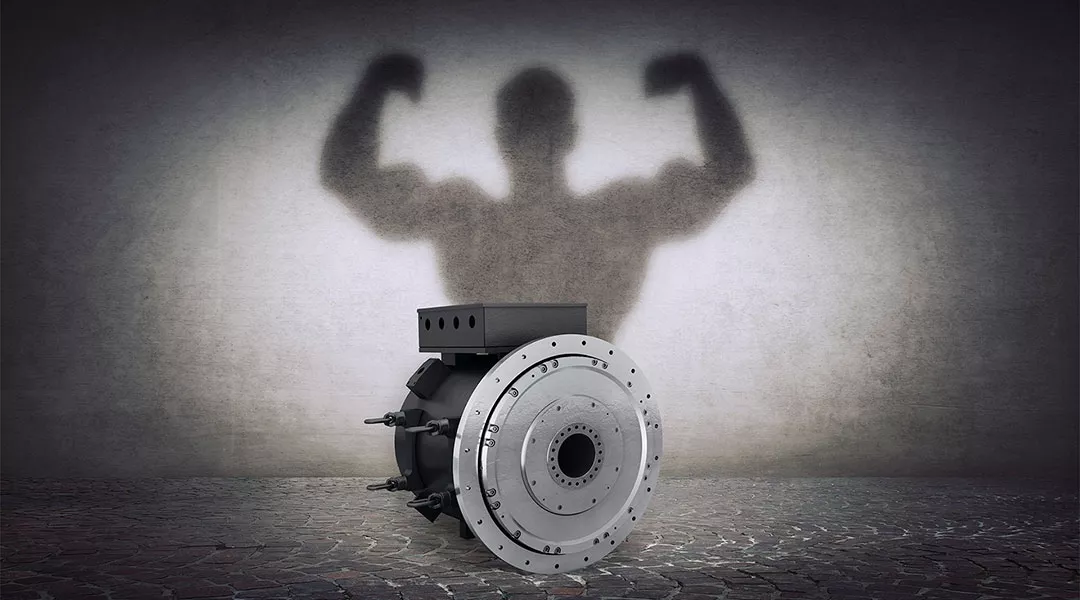
Direct drive technology is nothing new and yet in many cases it is not considered as a drive option. Understanding the function and thus the advantages of direct drive technology is helpful in making a decision for profitability, efficiency and process quality.
7 reasons for direct drive technology
Direct drive technology means that the motor power is transmitted directly and without intermediate components to the mechanical unit that is being powered. There are no drive belts, gears or similar parts. The technology is nothing new and has been in use for decades. But many machine builders are not sufficiently familiar with it to consider it as an alternative to classical motor-transmission combinations or even to hydraulic systems. But it is worth taking a closer look: many applications, e.g. servo presses, stand to benefit from implementation with direct drive technology, which with its typical advantages may even provide the decisive competitive advantage. Having an understanding of the advantages of direct drive technology and the construction of the motors is the foundation for making a well-informed decision.
Direct drive technology with torque motors
Direct drives are mainly implemented with linear motors or with torque motors. This article focuses on the high-torque rotary torque motors. The physical principles correspond to those of electrical drive technology, which make use of the laws of magnetism. Here the electric motor is connected directly to the machine shaft and the movement does not have to be transmitted through additional elements. The top choice for direct drive solutions from the drive specialist Baumüller are the torque motors in the DST2 series. These are multi-pole, permanent magnet synchronous motors in the water-cooled version.
DST2 torque motors
Significant advantages over motor-gear combination as well as hydraulic systems.
The functional principle of the synchronous motor
The synchronous motor consists of a rotor and a stator. In the DST2 permanent-field synchronous motors, the rotor contains permanent magnets, hence the term permanent-field. In asynchronous motors, by contrast, there are no permanent magnets and the rotation is produced through induction in the rotor. In the Baumüller torque motors electric current is supplied to the stator, creating in it a magnetic field. The electrical current here is controlled by the adjusting screw for the torque, and the frequency determines the speed. Both can be controlled with a servo-controller. One of the advantages here is a compact build due to the permanent magnets and good servo control capability. The system therefore has a high output density and enables precision in the process.
Multipole means that the motor can generate a higher torque and can do so even at a relatively low speed. To simplify, we can say that torque increases as the number of pole pairs rises. But peak torque is comparatively lower than with the low-pole synchronous motor. Torque motors are thus used in applications that require a high torque at low speeds. This is often the case when alternatives to traditional drive motor-transmission combinations or to hydraulic systems are needed, e.g. with presses, extruders or injection mold machines. Despite the focus on high speed, synchronous motors offer good acceleration properties and good control capability so that dynamic systems can also be realized.
Register now for the WEBCAST!
"Successfully integrating direct drive technology in your machines"
Compactness
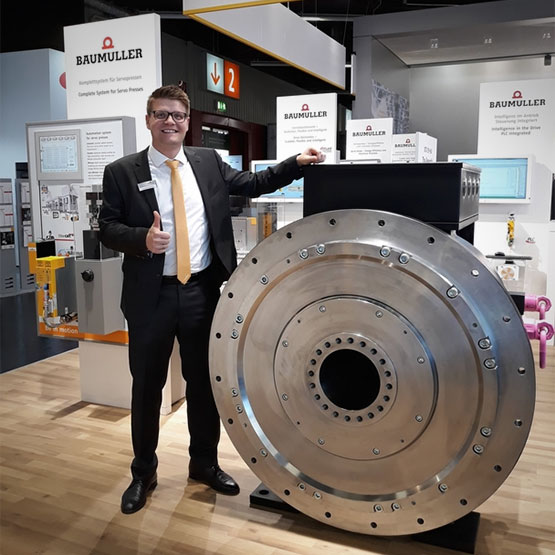
Our big one: We built this torque motor with an axis height of 560 mm for a manufacturer of servo presses
When the functional principle of the drive is clear, the advantages of this technology are revealed. The multipole motor in itself already has a very high power density and thus has a very compact build. In addition, the drive consists of just two parts, rotor and stator, and there are no transmission elements or hydraulic systems. This means that not only does the motor take up little space, but the cost of assembly is very low. An additional advantage with the integration in the machine is that the torque motor can be delivered as a kit motor. This means the machine builder is only supplied with the stator and the rotor, without housing and bearing, and thus can optimally integrate the drive into his machine. The DST2 torque motors are available with solid shaft, hollow shaft or with thrust bearings, thus offering considerable flexibility in integration into the machine. The version with thrust bearing was specially developed for use in extrusion technology: The integrated thrust bearing absorbs the axial forces that act on the motor, which arise from the counter-pressure in the process section.
Reference video
In the video you will learn more about the cooperation with WEIMA Maschinenbau GmbH and get to know our drive solution for shredding systems:
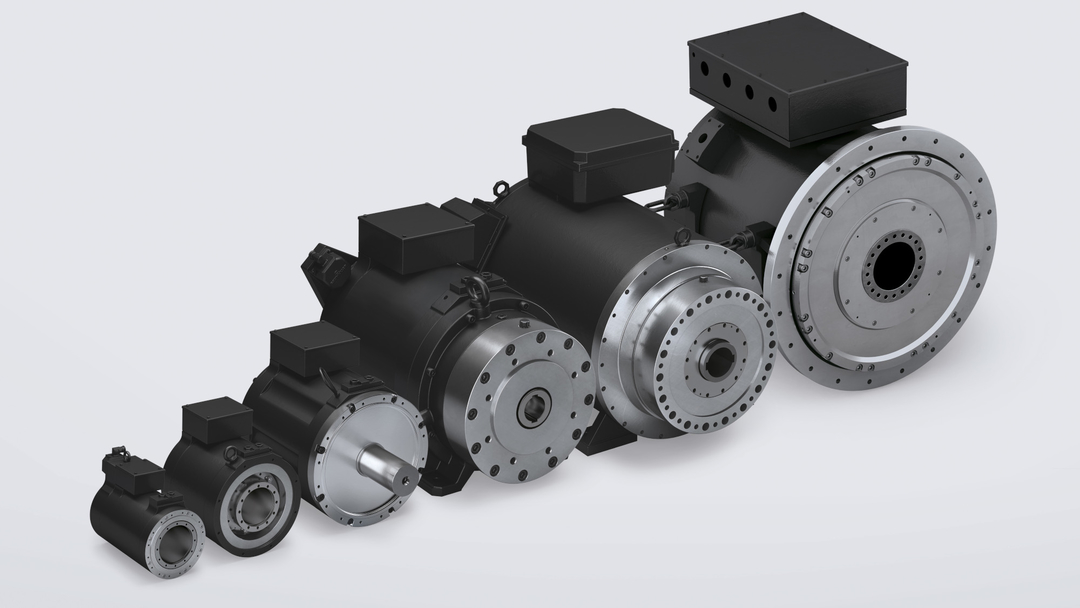
The DST2 torque motors are available with solid shaft, hollow shaft or with thrust bearings, thus offering considerable flexibility when they are integrated into the machine
Stiffness
One of the most common motivations for the use of torque motors is the servo performance, which on account of the stiffness of the connection between motor and load is significantly better than the motor-transmission combinations. The lack of an additional movement converter means lower moment of inertia, which allows greater dynamics. An additional advantage is the freedom from play and the lack of discrepancy between the mass moments of inertia of the motor and the load. Direct drive systems thus enable efficient implementation of dynamic processes.
Lifecycle costs
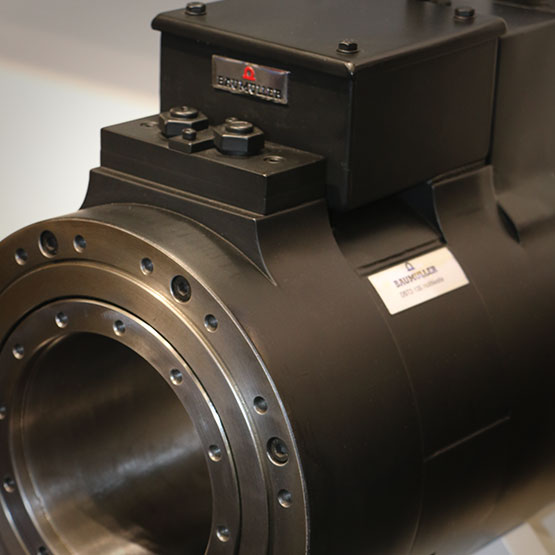
Hollow shaft motor: Torque motors are available with different shaft options. The classic variant is the hollow shaft. It offers a particularly high level of rigidity
Direct drives with torque motors perform well compared to classical motor-transmission solutions and hydraulic systems with considerably lower maintenance and service costs. The direct drive system is virtually oil free; the motor has a very long service life and the lack of components means less susceptibility to faults. The second advantage in considering the lifecycle costs is the lower energy use. Here the direct drive can also excel over the gear motor, since, first, the friction losses are lower, and second, it has a higher efficiency in the partial load range at a constant speed. This drive form thus also runs efficiently when changing frequently between partial and nominal load. You can save up to 50 percent of energy with this drive concept compared to traditional solutions, for example in presses. But the machine does not lose anything here in terms of dynamics. The motor has a dynamic startup performance and can quickly accelerate to the optimal output for the particular application. Hydraulic systems, with comparatively high lifecycle costs, lower system efficiency and higher heat development, incur significantly higher lifecycle costs.
Cooling and noise emission
An additional factor in the energy balance is the water cooling of the motor. With water cooling, both the surface heat and heat entry to the machine decrease. This further increases output density so that additional cost and energy-intensive fan cooling is no longer necessary. The reduced noise emissions are a positive side effect here. In hydraulic systems, there is by comparison a significantly higher heat development and thus additional energy requirements for fan motors. The oscillation tendency from pressure surges and the switching noises of the valves further contribute to a greater noise load. Noise emissions are also reduced in comparison to motor-transmission combinations due to the lack of gears.
The overall system
To ensure that all these advantages are realized in practice, direct drives are integrated into complete electrical drive systems. The speed and torque can be specifically controlled in the system. With its power electronics in the b maXX 5000 family, Baumüller provides the right electronics for realizing speed-variable drives with high output. For motors with multiple winding, Baumüller offers the ability to operate a motor with multiple servo drives.
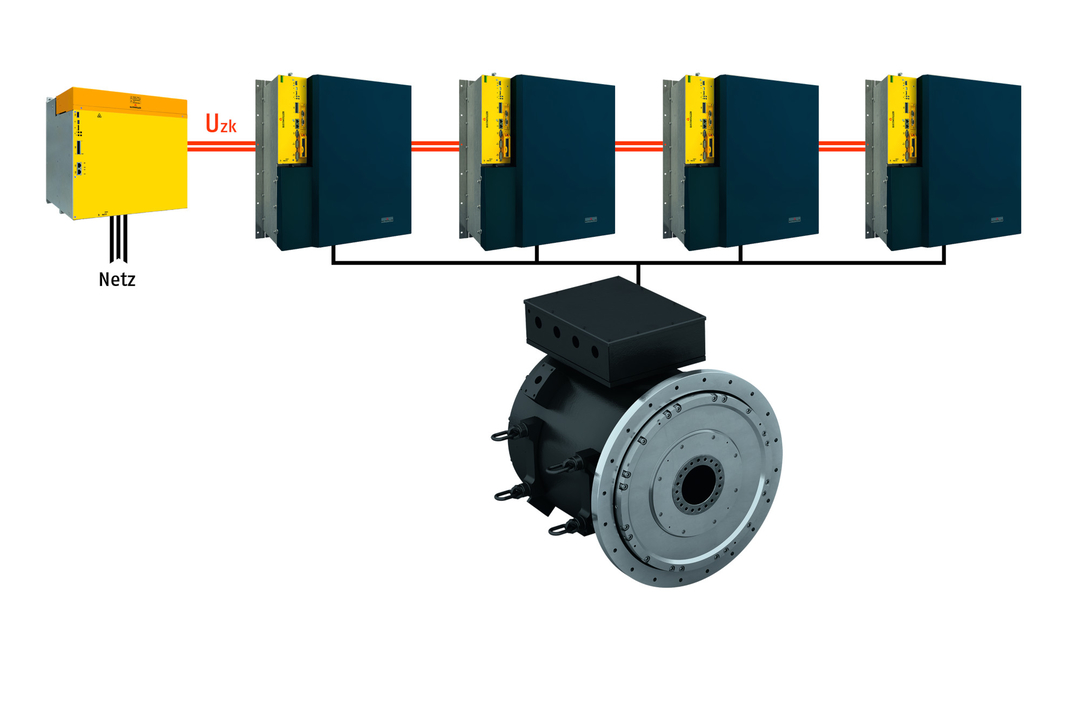
When running motors with multiple winding, multiple converters can run on one motor
b maXX 5000 Servo drives
Converters with many advantages: from cost savings to higher dynamics to increased safety.
The limits of direct drive technology
To assess when direct drive technology makes sense, you also have to understand its limits. The output of an electric motor is usually limited by how much torque the motor can apply without overheating. What is decisive for the nominal power of the motor, i.e. the output the motor can produce during continuous operation, is how effectively the motor can dissipate heat. On its DST2 motors, Baumüller uses water cooling with stainless steel corrugated tubes that allow optimal dissipation of losses with a high level of protection. Fluid cooling can increase and even double the output of electric motors.
Along with nominal output, the peak output is also significant. This is the maximum output the motor can produce, but which cannot be maintained in continuous operation without causing system damage. Ultimately the issue here too is that the system cannot get too hot. With its water-cooled torque motors, Baumüller can reach peak torques of up to 60,000 Nm.
An additional performance factor is speed. As magnets move past the copper coils, current is generated in the copper which produces a counter-electro magnetic force. To balance this counter-electro magnetic force, more current must be supplied to the motor. This current is normally available for the generation of torque. As a result, the higher the speed of the motor, the more difficult it is to achieve high torques. The greater the surface area between the magnets and copper winding, the more counter-electromagnetic force is produced. The speed of the motor is lower if the motor gets larger or the number of positions increases. The Baumüller torque motors reach speeds of up to 2000 min-1.
Reference video
In an interview with our customer Bemaco Engineering, you can find out more about a Coex system that has been equipped with our drive technology:
Conclusion
Despite all of its advantages, direct drive technology has in many cases yet to be used today. The reason for this has to do with cost, which is primarily due to the permanent magnets. Often the decision is made to stay with the classical systems because the machine builder is familiar with them and there are costs associated with the change to a new drive system. This hesitation is understandable, especially when you consider that the advantages of direct drive technology primarily become apparent over time.
Vorteile der Direktantriebstechnik
-
Greater machine output and thus higher productivity
-
Reduced downtimes due to high robustness and lack of maintenance of the system
-
Longer or no maintenance cycles
-
Higher energy efficiency
-
Smaller footprint
-
Lower noise emissions
In many production areas, requirements are constantly rising. Here, direct drive technology can in many cases be the solution of choice when the classical systems reach their limits. When considering a conversion of machines to direct drive technology, however, it is important to remember that your use shouldn't be justified by technical advantages alone, but especially must make sense economically. Depending on the requirements of the particular application for positioning precision, system dynamics and the maintenance and service concept, the use of direct drives therefore must always be carefully evaluated. But in many cases, the long-term advantages of direct drive technology such as greater productivity, lower maintenance, better energy efficiency, etc. pay for themselves and it makes sense to replace the classical solutions with modern direct drives.
Comparison of drive options
| Hydraulic system | Motor-transmission combination | Direct drive technology | |
|---|---|---|---|
| Energy efficiency | Poor overall efficiency due to current losses | Poor energy efficiency due to friction losses | High energy efficiency due to good efficiency |
| Energy required for additional fan motors | Energy required for additional fan motors | Water cooling | |
| Service/maintenance costs | High maintenance costs because risk of leaks | Routine maintenance with oil check for gears | Virtually no maintenance costs |
| Temperature dependency and required filtration of hydraulic oils | Limited service life of gears | Long service life | |
| Noise emission | Switching noises of the valves | Noise load from gears | Motor operation virtually noise-free |
| Oscillation tendency from pressure surges | No noise from fan motors | ||
| Space requirements | Extensive space required | Extensive space required | Compact design |
| Flexible integration due to assembly kit |
Do you have anymore questions?

Markus Keila
Produktmanager Motoren


